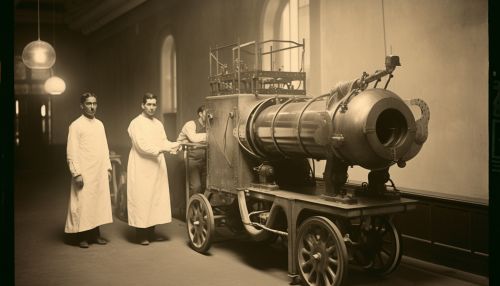Biomedical Imaging
Introduction
Biomedical imaging refers to the techniques and processes used to create images of the human body for clinical purposes or medical science. It is a critical aspect of medicine and plays a key role in the diagnosis, treatment, and monitoring of diseases. Biomedical imaging technologies can visualize both the structure and function of the human body, providing valuable information about the pathophysiology and mechanisms of disease.
History
The history of biomedical imaging is a fascinating journey that spans centuries. The earliest forms of biomedical imaging can be traced back to the discovery of X-rays by Wilhelm Conrad Röntgen in 1895. This groundbreaking discovery paved the way for the development of modern radiography, which remains a cornerstone of diagnostic imaging today.


In the mid-20th century, the development of ultrasound and nuclear medicine further expanded the capabilities of biomedical imaging. The advent of computed tomography (CT) in the 1970s revolutionized the field, allowing for the visualization of cross-sectional images of the body. This was closely followed by the introduction of magnetic resonance imaging (MRI) in the 1980s, which uses magnetic fields and radio waves to generate images of the body's internal structures.
Techniques
There are several different techniques used in biomedical imaging, each with its own advantages and limitations. These include:
Radiography
Radiography is one of the most commonly used imaging techniques. It involves the use of X-rays to create images of the body's internal structures. Radiography is particularly useful for imaging bones and detecting abnormalities such as fractures, infections, and tumors.
Computed Tomography (CT)
CT uses a series of X-ray measurements taken from different angles to produce cross-sectional images of the body. This technique provides more detailed information than conventional radiography and is often used to diagnose and monitor a wide range of conditions, including cancer, heart disease, and trauma.
Magnetic Resonance Imaging (MRI)
MRI uses a powerful magnetic field and radio waves to generate detailed images of the body's internal structures. Unlike CT and radiography, MRI does not use ionizing radiation, making it a safer option for certain patients. MRI is particularly useful for imaging soft tissues and organs, such as the brain, heart, and muscles.
Ultrasound
Ultrasound uses high-frequency sound waves to create images of the body's internal structures. It is a safe, non-invasive technique that is commonly used in obstetrics and gynecology to monitor the development of the fetus during pregnancy.
Nuclear Medicine
Nuclear medicine involves the use of radioactive substances to diagnose and treat disease. In diagnostic nuclear medicine, radioactive tracers are introduced into the body and their distribution is imaged using a gamma camera or a PET scanner.
Applications
Biomedical imaging plays a crucial role in many areas of medicine, including:
Diagnosis
Biomedical imaging is often the first step in the diagnosis of many diseases. It can reveal abnormalities in the body's structure or function that may indicate the presence of disease.
Treatment Planning
Once a diagnosis has been made, biomedical imaging can be used to plan treatment. For example, in cancer treatment, imaging techniques such as CT and MRI can be used to determine the exact location, size, and shape of a tumor, which can help guide surgical planning or radiation therapy.
Monitoring
Biomedical imaging is also used to monitor the progress of disease and the effectiveness of treatment. For example, imaging can be used to track the size of a tumor over time, or to monitor the response to medication in diseases such as multiple sclerosis.
Future Directions
The field of biomedical imaging is constantly evolving, with new technologies and techniques being developed all the time. Some of the most promising areas of research include molecular imaging, functional imaging, and the integration of imaging technologies with other disciplines such as genomics and proteomics.
